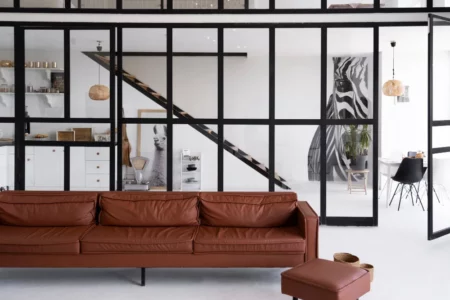 Creating a cohesive home design is essential for making your living space feel harmonious and visually appealing.
Creating a cohesive home design is essential for making your living space feel harmonious and visually appealing.
Today, we’ll explore key elements and strategies that can help you achieve a cohesive design that ties your home together.
1. Color Consistency
Consistency in color schemes is a fundamental aspect of a cohesive design. Choose a color palette that complements your style and preferences, and use it throughout your home. This doesn’t mean every room needs the exact same colors, but there should be a sense of unity. Consider using different shades of the same color or introducing accent colors to create variation while maintaining cohesion.
2. Consistent Flooring
Flooring is a significant visual element in your home. To achieve a cohesive design, it’s essential to maintain a consistent flooring material or color theme throughout the main living areas. This consistency helps rooms flow into one another seamlessly.
3. Furniture Style and Scale
Coordinating your furniture in terms of style and scale is crucial. Whether you prefer modern, traditional, or eclectic design, select furniture pieces that complement each other in terms of style and size. This creates a harmonious look and avoids visual clutter.
4. Repeating Patterns and Textures
Incorporate repeating patterns and textures in your interior design. This can be through fabrics, wallpaper, or decor items. Repeated patterns and textures provide a sense of rhythm and consistency, contributing to a cohesive design.
5. Architectural Details
Pay attention to architectural details such as moldings, trim, and doors. Consistency in these elements can enhance the overall design cohesiveness. When renovating, consider extending specific architectural details throughout your home.
6. Art and Decor Elements
Your choice of art and decor pieces can tie your home’s design together. Select pieces that resonate with your overall design style and color palette. These elements can serve as visual anchors and create a sense of unity.
7. Consistent Lighting Fixtures
Consistency in lighting fixtures helps maintain a cohesive design. Choose lighting options that align with your design style and place them strategically to provide both functionality and aesthetic value.
8. Transitional Spaces
Ensure that transitional spaces, like hallways and entryways, are also considered in your design. These areas should flow seamlessly from one room to another and maintain the overall design theme.
9. Personal Touches
While consistency is essential, don’t forget to incorporate personal touches and elements that reflect your individual style and personality. These unique elements can make your home design more inviting and interesting.
Creating a cohesive home design involves careful planning and attention to detail. Remember, a cohesive design doesn’t mean everything has to match perfectly; it means creating a harmonious look that ties your living spaces together.
Picture Credit: Freepik



